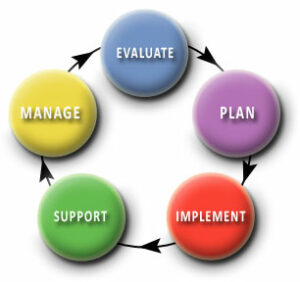Last week’s article extolled the virtues of budgeting…and the vital reasons why your business – and EVERY small business – should create and operate with a budget.
Business budgeting allows you to create a financial roadmap and not only see where you’ve been (i.e., whether you are adhering to your budget) and also give you a crystal clear view of where you’re going as you move forward in your business.
This week, it’s time to take a look at the Keep It Simple Strategy (K.I.S.S.) so you can most effectively create and utilize a budget for your business. The K.I.S.S. principle has been widely used in business…and with entrepreneurs, the simpler the better. After all, we want to spend our time building our businesses, visioning for the future growth of our companies and generally being the captain of our ship.
most effectively create and utilize a budget for your business. The K.I.S.S. principle has been widely used in business…and with entrepreneurs, the simpler the better. After all, we want to spend our time building our businesses, visioning for the future growth of our companies and generally being the captain of our ship.
Collecting Your Information
The first step in creating an accurate and effective budget is to collect all your Profit & Loss (P&L) information and get it organized in a way that fits your specific industry, business model and common business practices. One of our recommended tools for keeping track of all your financial data is QuickBooks, but you can use whatever accounting software that you choose…just be sure to get all those receipts out of the shoeboxes!
The three key areas you’ll need to focus on in your budgeting process are:
- Income – Everything coming in…revenue generated from sales, services provided, accounts receivable, etc.
- Expenses – Everything going out…rent, payroll, utilities, marketing, etc.
- Profit – The difference been income and expenses (ideally, a positive number!)
As you gather up your information, for budgeting purposes, be sure to include all the major expense categories…and while this can vary from business to business, here are some examples of key information you’ll need:
- Rent or Mortgage Payments
- Personnel and Payroll (be sure to include payroll taxes here)
- Cost of Goods (actual costs relating to producing or purchase your products/services)
- Loan/Credit Line Payments
- Phone, Internet, Utilities, Insurance
- Sales and Marketing
- Outside Vendors (such as accounting, legal, outsourced services)
- Travel Expenses and Company Vehicles
- Repairs and Maintenance
- Fees, Licenses, Dues and Subscriptions
- Interest and Depreciation
Analyzing the Information – Show Me The Money!
Once you are confident that you have all the pieces of the P&L puzzle, review the details around each specific line item. Where can you cut expenses? Where can you increase profits? How will your current numbers affect your future financials and company success?
And guess what? The good news is that with your financial data in place from the previous year/quarter/period, with a little more organization, you actually already have a functional budget — because you already know how much you are spending. If that worked well for the previous period, you’re off and running for the next period.
Now, you can start asking the important questions moving forward, such as:
- Will you have new hires in the coming period? How will that impact payroll (and taxes)?
- Will you or your team have an increase in business travel?
- How much growth do you anticipate in the next period? How will that affect your monthly/quarterly/annual revenue?
- Do you anticipate rent or general overhead expenses to increase (or decrease)?
- How are you planning for the tax implications of any changes that take place in your business?
- Will you be paying yourself or key partners/employees more? Can you?
- …and what are the important questions specific to YOUR business that you SHOULD be asking?
With these key questions answered, you now have your roadmap to make critical financial decisions in your business. All these decisions affect your operational budget and determine whether you will generate enough profit to pay yourself, whether you are staffed properly, whether you have adequate space for company growth, how to plan for tax increases and virtually every other key financial decision that you will need to make about your business. Keep in mind that budgets can always be adjusted; there will always be some curve balls you didn’t anticipate coming your way.
A review of your businesses financial operations creates a new level of “reality check” and increased confidence in your plan moving forward. Now just add effective management of your cash flow and you are well on your way to a solid financial oversight in your company.
Next week, we’ll focus on keeping a close eye on your cash flow to add to your formula for financial success in your business…

